#St Louise IX
Photo

Happy Feast Day
Saint King Louis IX of France
1214-1270
Feast day: August 25
Patronage: Architects and Monastic third orders
Saint Louis IX was crowned King of France at age 12 and reigned until his death. His mother ruled the kingdom until he reached maturity and instructed him in his education and religion. Louis married Margaret of Provence in 1234 and they had 11 children. He saw himself as a “Lieutenant of God on earth” even obtaining Christ's crown of thorns from Baldwin II, Latin emperor at Constantinople. He was an exemplary king, protecting the poor and clergy, founding hospitals and the Abbey of Royaumount and built Saint-Chapelle, an architectural gem. He led two crusades in 1238 and 1267, where he died of the plague.
{website}
57 notes
·
View notes
Text
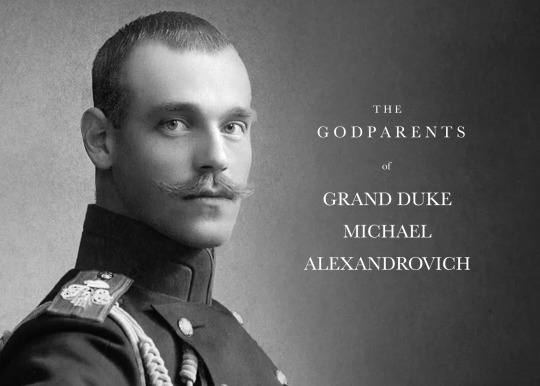
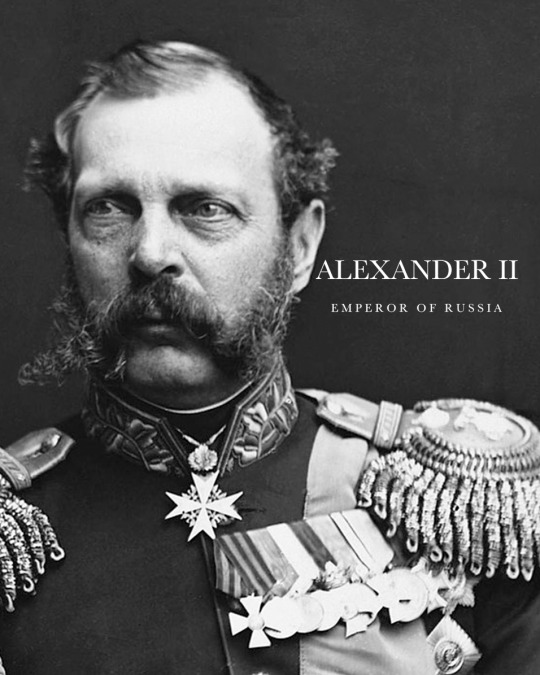
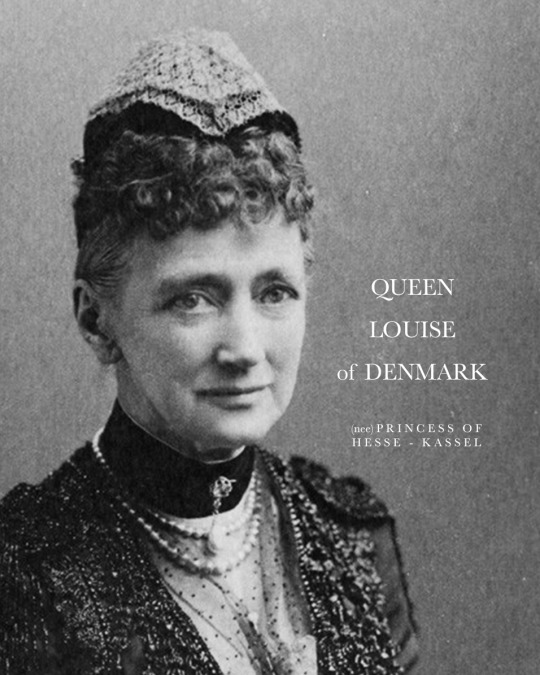

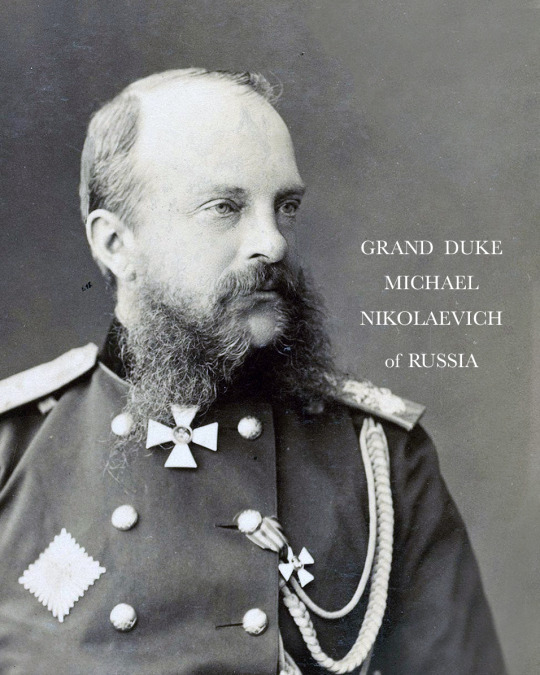
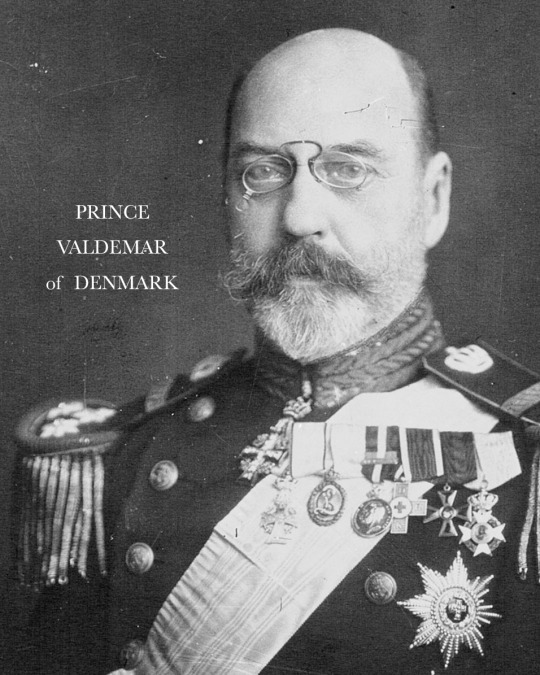
GODPARENTS OF GRAND DUKE MICHAEL ALEXANDROVICH
Grand Duke Michael Alexandrovich, the youngest son of Emperor Alexander III (then Tsesarevich) of Russia, was born on 4 December 1878 at the Anichkov Palace, Saint Petersburg, Russia. He was christened on 22 December at the Winter Palace, St. Petersburg, by the Confessor of Their Imperial Majesties. His godparents were:
ALEXANDER II, EMPEROR OF RUSSIA - the Russian Emperor, his grandfather, was one of his godparents. Alexander’s most significant reform as emperor was the emancipation of Russia’s serfs in 1861, for which he is known as Alexander the Liberator.
PRINCESS LOUISE OF HESSE-KASSEL, QUEEN CONSORT OF DENMARK - his maternal grandmother was one of his godparents. Louise became the Queen consort of Denmark upon her husband’s - King Christian IX - accession in 1863. Through her six children, she was a grandmother of not only the future Tsar of Russia (Nicholas II, Michael's older brother), but also that of King George V of the United Kingdom; King Constantine I of Greece; King Christian X of Denmark, and King Harken VII of Norway.
GRAND DUCHESS ALEXANDRA IOSIFOVNA - born a Princess of Saxe-Altenburg, Alexandra married Grand Duke Konstantin Nikolaevich, thus becoming Michael's great-aunt (by marriage), and one of his godparents. She was considered a beautiful woman, but plagued by insecurity, and her marriage to the grand duke had been largely unhappy - though the first sixteen of their marriage was a harmonious one.
GRAND DUKE MICHAEL NIKOLAEVICH - his great-uncle and namesake was listed as one of his godparents. A soldier for most of his adult life, he enjoyed a favourable relationship with the three last Emperors of Russia - his brother Alexander II; nephew Alexander III; and great-nephew Nicholas II.
PRINCE VALDEMAR OF DENMARK - his maternal uncle was also another of his godparents. He had a lifelong naval career, becoming the first president of the Seamen's Association of 1856.
Source
14 notes
·
View notes
Photo



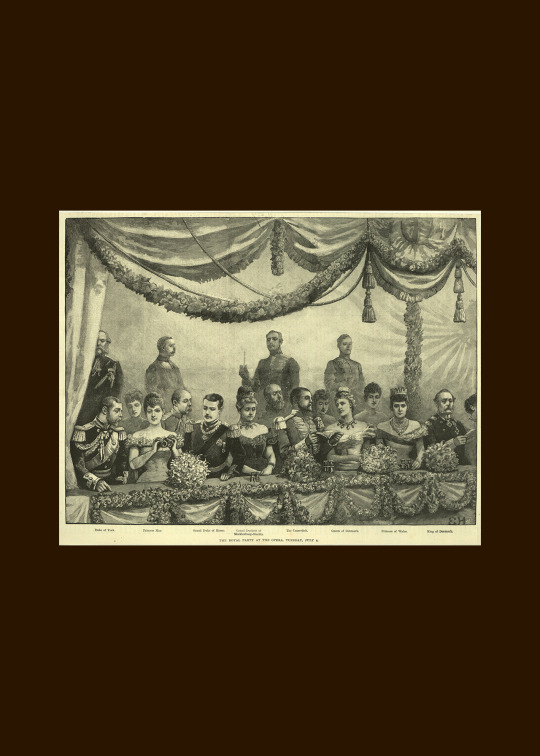
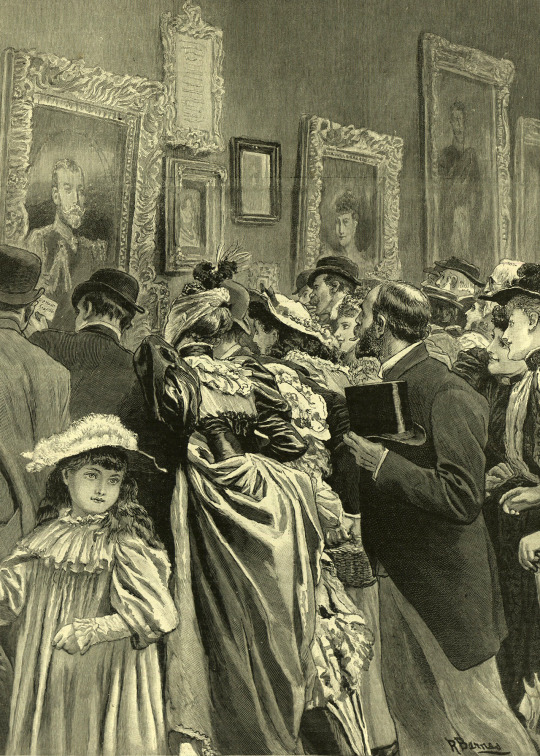



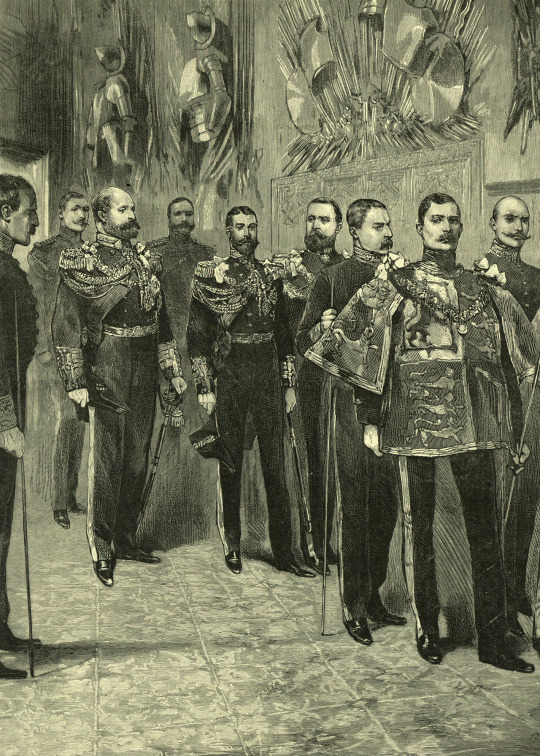

Coverage of the wedding of the then Duke of York (later KING GEORGE V) to Princess Mary of Teck (later QUEEN MARY) by the The Illustrated London News, July 1893. (1) Cover on 10 July 1893. (2) The wedding breakfast at Buckingham Palace: the royal table. (3) The congratulations after the wedding ceremony. (4) The royal party at the opera, Tuesday, July 4. Left to Right: Duke of York, Princess May, Grand Duke of Hesse (ERNEST LOUIS), Grand Duchess of Mecklenburg-Strelitz (PRINCESS AUGUSTA OF CAMBRIDGE), The Czarevitch (later NICHOLAS II OF RUSSIA), Queen of Denmark (LOUISE OF HESSE-KASSEL), Princess of Wales (later QUEEN ALEXANDRA), King of Denmark (CHRISTIAN IX). (5) The presents on view at the Imperial Institute. (6) Departure of the Duke of York and his bride from Buckingham Palace. (7) The marriage of HRH the Duke of York, K.G., and HSH the Princess Victoria Mary of Teck: the wedding ceremony in St. James’s Chapel. (8) The Duke of York receiving an Address from the Lord Mayor at the Mansion House. (9) The Bridegroom’s procession to the Chapel. (10) The marriage ceremony in the Chapel Royal, St. James’s.
#casual curiosity about british royalty in the 1930s somehowww led me to a couple of memoirs by queen elizabeth's contemporaries#now all of a sudden i'm brushing with the late victorian era???#maybe i'll pick up a couple of books about george v???#(maybe skipping edward vii bec he sounds like a sack of ham but IDK MAN IDK)#didn't even interest me when i was reading up on nicholas ii but the crown shows me george v with his pet parrot on his gd shoulder#and a dramatization of the ~angst the ~turmoil the ~self-preservation of the house of windsor when they'd ultimately consigned the romanovs#to their deaths#and ALL OF A SUDDEN ??? interest: piqued#slippery slope idefk#history#house of windsor#late victorian era#anw these illustrations are stunning
52 notes
·
View notes
Photo
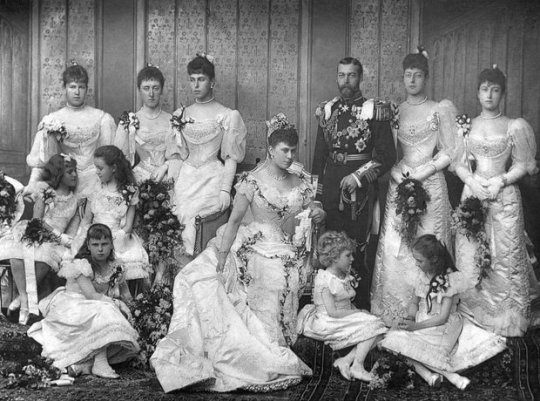
𝒲𝑒𝒹𝒹𝒾𝓃𝑔 𝒲𝑒𝒹𝓃𝑒𝓈𝒹𝒶𝓎
~~~~~~~~~~~~~~~~~~~~~~~~~~~~~~~~~~~~~~~~~~~~~~~~~~~~~~~~~~~
𝒯𝒽𝑒 𝒞𝑜𝓊𝓅𝓁𝑒
His Majesty George V The King & Her Majesty Queen Mary
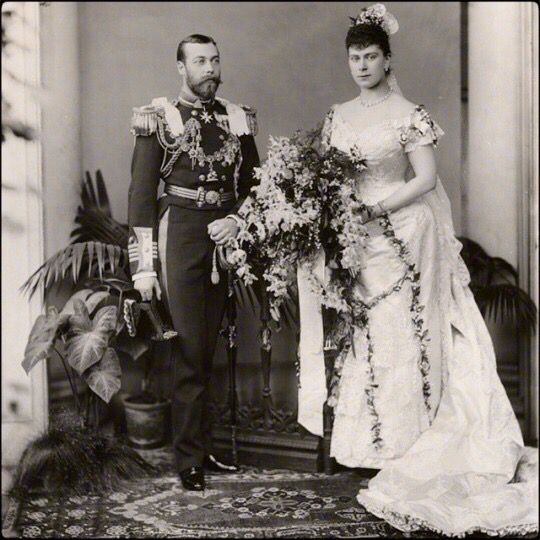
~~~~~~~~~~~~~~~~~~~~~~~~~~~~~~~~~~~~~~~~~~~~~~~~~~~~~~~~~~~
𝒲𝑒𝒹𝒹𝒾𝓃𝑔 𝒟𝒶𝓉𝑒 & 𝐿𝑜𝒸𝒶𝓉𝒾𝑜𝓃
The Royal Wedding took place at 12:30PM on Thursday, July 6th, 1893 in The Chapel Royal (Left Picture) at St. James Palace (Right Picture) in London, England

~~~~~~~~~~~~~~~~~~~~~~~~~~~~~~~~~~~~~~~~~~~~~~~~~~~~~~~~~~~
𝐸𝓃𝑔𝒶𝑔𝑒𝓂𝑒𝓃𝓉 𝒮𝓉𝑜𝓇𝓎
♕ Previous Engagement: Her Majesty Queen Mary (Top Picture) was engaged before meeting His Majesty George V. Mary had become engaged to His Royal Highness Prince Albert The Duke of Clarence and Avondale (Bottom Picture), the older brother of George. Sadly the wedding never happened, as The Duke had fell ill with the Flu which then took a bad turn, turning the flu into Pneumonia. The Duke passed away on Friday, January 8th, 1892 at The Sandringham House in Norfolk, England.

♕ Staying In The Family - Part 1: Her Majesty Queen Victoria (George’s Grandmother: Left Picture) wanted the then His Royal Highness Prince George of Wales, to marry either Her Majesty Queen Marie of Romania (His Cousin: Middle Picture) or Grand Duchess Victoria Feodorovna (His Cousin: Right Picture). George sadly was not fond of either of the two women & Her Majesty Queen Marie of Romania (Middle Picture) did react to George’s proposal to her by rejecting him.

♕ “I’m Too Young”: Even after his grandmother tried to wed George & his two cousins, the young prince refused to be married. “I still think marrying too young is a bad thing. The one thing I never could do is to marry a person that didn’t care for me. I should be miserable for the rest of my life.” George wrote this to his grandmother stating that he was too young to be married & even if he did marry young, he would marry someone he loved.
♕ Staying In The Family - Part 2: George’s grandmother & Mary had met during her engagement to the now parted Duke, & Queen Victoria was fond of Mary. She had spoken to Mary to see what she would think about marrying her fiancé’s brother. This was very embarrassing for both George & Mary, as Mary’s fiancé's & George’s brother, had only been dead for 1 year & the two were still in mourning. The couple began to feel the pressures of the royal life. Mary began to feel pressure from not only her family but George’s family to be a married woman. George felt the pressure of his new position as second-in-line to the throne, he was still recovering from the proposal rejection of his cousin Her Majesty Queen Marie of Romania, & he also had no idea if Mary even had romantic feelings towards him.
♕ The Proposal: After a long conversation with George’s favorite aunt Olga Constantinovna of Russia (Also known as Queen Olga of Greece: Left Picture), the young duke was urged to propose to his brother’s fiancé Mary. George had help with his proposal from his sister Her Royal Highness Louise The Princess Royal (Middle Picture) & his brother-in-law Alexander Duff 1st Duke of Fife (Louise’s husband: Right Picture). On Wednesday, May 3rd, 1893, Louise had “arranged” to have tea with Mary. When Mary arrived to have tea with Louise, she had found George & Louise waiting for her instead of just Louise. The Princess Royal had suggested that the couple go to the garden to go watch the frogs that lived in the garden pond. The duke then proposed to Mary by the pond & she happily accepted George’s proposal. The couple came to learn how to love & care for each other deeply, despite the stress & heartbreak of the last year.

~~~~~~~~~~~~~~~~~~~~~~~~~~~~~~~~~~~~~~~~~~~~~~~~~~~~~~~~~~~
𝒯𝒽𝑒 𝒲𝑒𝒹𝒹𝒾𝓃𝑔
♕ Morning: That Thursday morning, when George was walking the corridors of Buckingham Palace, he accidentally spotted his bride. As tradition, Bride & Groom are never supposed to see each other (unless a private moment is planned by the couple to meet with each other before the wedding) because it is bad luck. As George spotted Mary, he proceeded to make a low & courtly bow towards the princess, a sweet moment many say that Mary never forgot.
♕ Wedding Party: The Royal Wedding was attended by 5 Bridesmaids, 5 Junior Bridesmaids, & 2 Supporters of The Groom.
♕ Wedding Officiant: The Archbishop of Canterbury Edward White Benson (Left Picture) performed the ceremony. He was assisted by The Bishop of London Frederick Temple (Middle Picture), The Bishop of Rochester Randall Thomas Davidson 1st Baron Davidson of Lambeth (Right Picture), & 5 other priests.
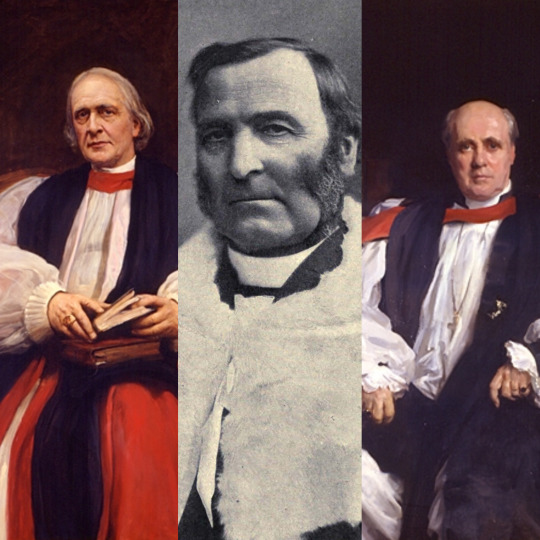
♕ Register Signing Tradition: As Tradition during all Royal Weddings, the Register must be signed. The Register of the Wedding of His Majesty George V The King & Her Majesty Queen Mary was signed by Her Majesty Queen Victoria, The Prime Minster William Ewart Gladstone (Pictured Below), & all other royal personages that were present at the wedding.
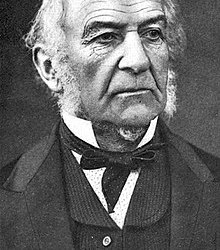
♕ Balcony Tradition: As Tradition of all Royal Weddings, the Bride & Groom along with family, made an appearance on the Buckingham Palace balcony. Even Queen Victoria made a rare public appearance when she joined the couple on the Balcony.
♕ Official Portraits (Photo is in Order): The Official Painters of the Royal Wedding were Heinrich Anton von Angeli, Laurits Tuxen, & Sir Samuel Luke Fildes

♕ Title Change: As Royal Tradition, the Groom (Sometimes) & Bride’s (Always) Title will change. Mary’s Title changed from Her Serene Highness Princess Victoria Mary of Teck to Her Royal Highness The Duchess of York. George’s Title changed from His Royal Highness Prince George of Wales to His Royal Highness The Duke of York.
~~~~~~~~~~~~~~~~~~~~~~~~~~~~~~~~~~~~~~~~~~~~~~~~~~~~~~~~~~~
𝒢𝓊𝑒𝓈𝓉 𝐿𝒾𝓈𝓉
The royal parties traveled from Buckingham Palace to St. James Chapel in 4 large carriages.
♕ First Carriage: Members of the Household.
♕ Second Carriage: The Groom & His Supporters (Mentioned Below in The Guest List)
♕ Third Carriage: The Bride, His Highness Francis The Duke of Teck (The Bride’s Father: The Left Picture), & His Serene Highness Prince Adolphus of Teck (The Bride’s Brother: The Right Picture)

♕ Fourth Carriage: Her Majesty Queen Victoria (The Groom’s Grandmother), Her Royal Highness The Duchess of Teck (The Bride's Mother: Left Picture), Prince Francis of Teck (The Bride’s Brother: Middle Picture), & Alexander Cambridge 1st Earl of Athlone (The Bride’s Brother: Right Picture)
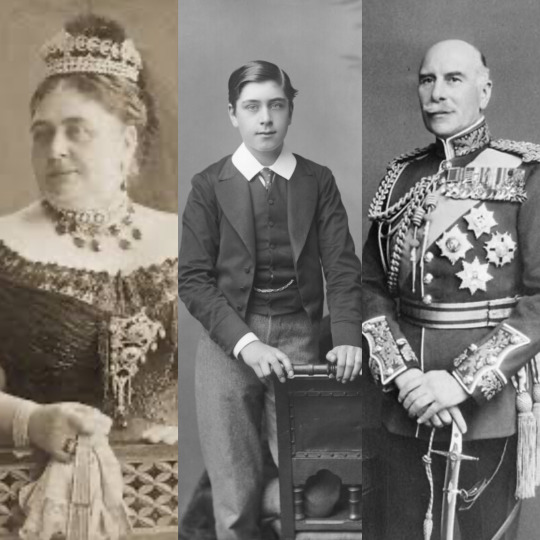
♕ Wedding Party:
The 5 Bridesmaids: Her Royal Highness The Princess Victoria (The Groom’s Sister), Her Majesty Maud The Queen of Norway (The Groom’s Sister), Grand Duchess Victoria Feodorovna of Russia (The Groom’s First Cousin: Mention Above In Staying In The Family - Part 1), Her Royal Highness Alexandra The Princess of Hohenlohe-Langenburg (The Grooms First Cousin), & Princess Beatrice of Saxe-Coburg and Gotha (The Groom’s First Cousin)
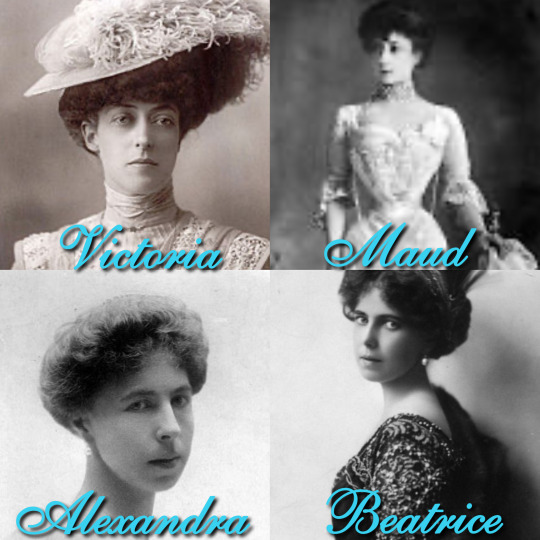
The 5 Junior Bridesmaids: 1. Her Royal Highness Margaret The Crown Princess of Sweden Duchess of Scania (The Groom’s First Cousin). 2. Lady Patricia Ramsay (The Groom’s First Cousin), 3. Her Royal Highness Alice Princess Andrew of Greece and Denmark (also known as Mother Superior Alice-Elizabeth & Great-Grandaughter of Queen Victoria), 4. Queen Victoria of Spain (The Groom’s Cousin), & 5. Her Highness Princess Helena Victoria (The Groom’s Cousin)
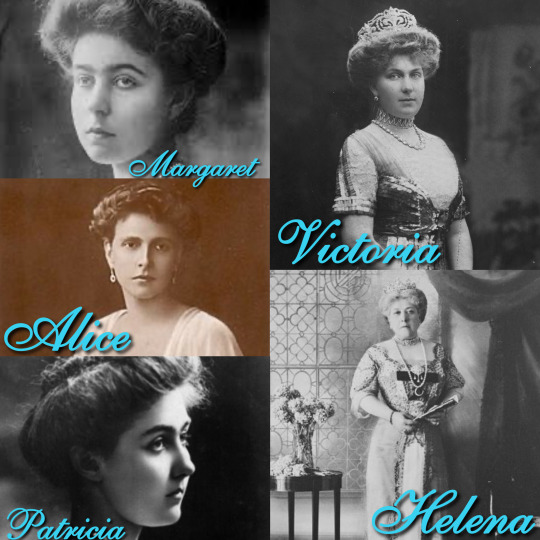
The Grooms Supporters: His Majesty Edward VII The King (The Groom’s Father: Left Picture) & His Royal Highness Alfred The Duke of Saxe-Coburg and Gotha (The Groom’s Uncle: Right Picture)

𝒢𝓊𝑒𝓈𝓉𝓈
𝒯𝒽𝑒 𝒢𝓇𝑜𝑜𝓂'𝓈 𝐹𝒶𝓂𝒾𝓁𝓎 (Not Mentioned In The Wedding Party)
Her Majesty Queen Alexandra (Mother)
Her Royal Highness The Princess Royal (Sister & Brother In Law: Mentioned Above in The Proposal)
Her Royal Highness Princess Arthur of Connaught, Duchess of Fife (Niece)
Her Imperial and Royal Highness Maria The Dowager Duchess of Saxe-Coburg and Gotha, Duchess of Edinburgh (Paternal Aunt)
His Royal Highness Arthur Duke of Connaught and Strathearn & Her Royal Highness Louise The Duchess of Connaught and Strathearn (Paternal Uncle & Aunt)
Prince Arthur of Connaught (First Cousin)
Her Imperial Majesty Victoria The Empress Frederick
His Royal Highness Prince Henry of Prussia and Princess (Princess Irene) Henry of Prussia (First Cousins)
Her Royal Highness The Grand Duchess of Hesse and by Rhine
The Most Honorable Victoria The Dowager Marchioness of Milford Haven & The Most Honorable Louis The Marquess of Milford Haven (First Cousin & Her Husband)
His Highness Albert The Duke of Schleswig-Holstein (First Cousin)
Her Royal Highness The Princess Louise Duchess of Argyll & John Campbell 9th Duke of Argyll Marquess (Marquis) of Lorne (Paternal Aunt & Uncle)
Her Royal Highness The Princess Beatrice & His Royal Highness Prince Henry of Battenberg (Paternal Aunt & Uncle)
The Most Honorable Alexander The Marquess of Carisbrooke (First Cousin)
His Majesty Christian IX of Denmark and Queen Louise of Denmark (Maternal Grandparents)
His Royal Highness Prince Valdemar of Denmark (Maternal Uncle)
Her Imperial Majesty Maria Empress of All the Russias
His Imperial Majesty Nicholas II Emperor and Autocrat of All the Russias (First Cousin)
Ernest II The 7th Prince of Hohenlohe-Langenburg (Half-Second Cousin)
His Majesty Albert I The King of the Belgians (Paternal Second Cousin - Once Removed)
Prince Philipp of Saxe-Coburg and Gotha (Paternal Second Cousin - Once Removed)
Lady Feodora Gleichen (Second Cousin)
Lady Helena Gleichen (Second Cousin)
Countess Victoria Gleichen (Second Cousin)
𝒯𝒽𝑒 𝐵𝓇𝒾𝒹𝑒'𝓈 𝐹𝒶𝓂𝒾𝓁𝓎
His Royal Highness George The Duke of Cambridge (Maternal Uncle)
Her Royal Highness Augusta The Dowager Grand Duchess of Mecklenburg-Strelitz & His Royal Highness Frederick The Grand Duke of Mecklenburg-Strelitz (Maternal Aunt & Uncle)
Colonel Augustus FitzGeorge (First Cousin)
𝒪𝓉𝒽𝑒𝓇 𝐹𝑜𝓇𝑒𝒾𝑔𝓃 𝑅𝑜𝓎𝒶𝓁𝓉𝓎
Prince William “Edward” of Saxe-Weimar & Her Serene Highness Augusta Princess William “Edward” of Saxe-Weimar
The Maharaja of Bhavnagar
Jagatjit Singh, The Raja of Kapurthala
The Thakur Sahib of Morbi
Bhagvat Singh, The Thakur Sahib of Gondal
𝒜𝓂𝒷𝒶𝓈𝓈𝒶𝒹𝑜𝓇𝓈 & 𝐸𝓃𝓋𝑜𝓎𝓈
Count Ferdinand von Zeppelin
Russian Ambassador Baron Egor Egorovich Staal Madam de Staal
German Ambassador Paul von Hatzfeldt
The Turkish Ambassador
Austro-Hungarian Ambassador Count Franz Deym & Countess Deym
The Italian Ambassador & Countess Tornielli
The Spanish Ambassador
The United States of America Ambassador Thomas Bayard and Mrs. Mary (Clyme) Bayard
The Belgian Minister & Madam Solvyns
The Danish Minister & Madam de Bille
Portuguese Minister Luís Pinto de Soveral 1st Marquis of Soveral
Romanian Minister Alexandru Plagino
The Greek Chargé d'Affaires & Madam Romanos
𝒫𝑜𝓁𝒾𝓉𝒾𝒸𝒾𝒶𝓃𝓈
The Prime Minister and First Lord of the Treasury The Right Honorable William Gladstone (Mentioned Above in The Wedding) & Mrs. Catherine (Glynne) Gladstone
The Lord Chancellor The Right Honorable Farrer Herschell 1st Baron Herschell & Lady Agnes (Kindersley) Herschell
The Chancellor of the Exchequer The Right Honorable Sir William Harcourt & Lady Elizabeth (Motley) Harcourt
The Chief Commissioner of Works The Right Honorable George Shaw-Lefevre 1st Baron Eversley & Lady Constance (Moreton) Shaw-Lefevre
The Lord President of the Council and Secretary of State for India The Right Honorable John Wodehouse 1st Earl of Kimberley & Countess Florence (FitzGibbon) Wodehouse of Kimberley
The Secretary of State for the Home Department The Right Honorable Herbert Asquith 1st Earl of Oxford & Asquith
The Secretary of State for Foreign Affairs The Right Honorable Archibald Primrose 5th Earl of Rosebery & 1st Earl of Midlothian
The Secretary of State for War The Right Honorable Sir Henry Campbell-Bannerman & The Honorable Mrs. Sarah (Bruce) Campbell-Bannerman
The First Lord of the Admiralty The Right Honorable John Spencer 5th Earl Spencer (& Viscount Althorp) & Countess Charlotte (Seymour) Spencer
The Secretary of State for Scotland The Right Honorable Sir George Trevelyan 2nd Baronet & Lady Caroline (Phillips) Trevelyan
The Chief Secretary for Ireland The Right Honorable John Morley 1st Viscount Morley of Blackburn
The Chancellor of the Duchy of Lancaster James Bryce 1st Viscount Bryce & Mrs. Elizabeth (Ashton) Bryce
𝑅𝑜𝓎𝒶𝓁 𝐻𝑜𝓊𝓈𝑒𝒽𝑜𝓁𝒹
The Most Honorable Lord Steward of the Household Gavin Campbell 1st Marquess of Breadalbane & Alma (Graham) Campbell Marchioness of Breadalbane
The Most Honorable Lord Chamberlain of the Household Charles Wynn-Carington 1st Marquess of Lincolnshire & The Honorable Lady Cecilia (Harbord) Wynn-Carington
Gold Stick-in-Waiting Bodyguard Sir Patrick Grant
Captain of the Honourable Corps of Gentlemen-at-Arms The Right Honorable George Venables-Vernon 7th Baron Vernon
Captain of the Yeomen of the Guard The Right Honorable William Edwardes 4th Baron Kensington
Treasurer of the Household The Right Honorable Edwyn Scudamore-Stanhope 10th Earl of Chesterfield
Comptroller of the Household Sir George Leveson-Gower
Vice-Chamberlain of the Household The Right Honorable Charles Spencer 6th Earl Spencer
Master of the Household Major-General Sir John Cowell
Master of the Buckhounds/Hounds Thomas Lister 4th Baron Ribblesdale
Acting Mistress of the Robes Anne (Spencer-Churchill) Innes-Ker Duchess of Roxburghe
Lady of The Bedchamber Jane Spencer (Conyngham) Baroness Churchill
The Right Honorable Francis Stonor 4th Baron Camoys Lord-In-Waiting
Garter Principal King of Arms (Senior King of Arms & Officer of Arms) Sir Albert William Woods
The Right Honorable Charles Harbord 5th Baron Suffield Lord-in-Waiting to the Prince of Wales
Chamberlain to the Princess of Wales The Right Honorable Charles Colville 1st Viscount Colville of Culross & Wife to The Chamberlain to the Princess of Wales The Honorable Lady Cecile (Carrington) Colville
𝒪𝓉𝒽𝑒𝓇 𝒢𝓊𝑒𝓈𝓉𝓈
His Grace Henry Fitzalan-Howard 15th Duke of Norfolk Earl Marshal
The Honorable Frances (Pitt-Rivers) Osborne The Duchess of Leeds
His Grace Spencer Cavendish 8th Duke of Devonshire & Her Grace Louisa (Augusta) Cavendish Duchess of Devonshire
His Grace John Manners 7th Duke of Rutland & Janetta (Hughan) Manners Duchess of Rutland
His Grace William Scott 6th Duke of Buccleuch & Louise (Hamilton) Scott Duchess of Buccleuch
His Grace George Campbell 8th Duke of Argyll & Her Grace Amelia (Claughton) Campbell Duchess of Argyll (Father & Stepmother of The Groom’s Uncle)
His Grace William Cavendish-Bentinck 6th Duke of Portland & Her Grace Winifred (Dallas-Yorke) Cavendish-Bentinck Duchess of Portland
James Hamilton 2nd Duke of Abercorn & Mary (Curzon-Howe) Hamilton Duchess of Abercorn
The Most Honorable Robert Gascoyne-Cecil 3rd Marquess of Salisbury & Georgina (Alderson) Gascoyne-Cecil Marchioness of Salisbury
William Edgcumbe 4th Earl of Mount Edgcumbe
The Right Honorable Edward Bootle-Wilbraham 1st Earl of Lathom & Alice (Villiers) Bootle-Wilbraham Countess of Lathom
The Right Honorable Richard Cross 1st Viscount Cross & Viscountess Georgiana (Lyon) Cross
The Right Honorable Hardinge Giffard 1st Earl of Halsbury & Wilhelmina (Woodfall) Giffard Countess of of Halsbury
The Right Honorable Lord George Hamilton & Lady Maud (Lascelles) Hamilton
The Speaker of the House of Commons The Right Honorable Arthur Peel 1st Viscount Peel
The Right Honorable George Goschen 1st Viscount Goschen & Mrs. Lucy (Dalley) Goschen
The Right Honorable Joseph Chamberlain & Mrs. Mary (Endicott) Chamberlain
The Right Honorable Arthur Balfour 1st Earl of Balfour
♕ Spectators: Since The Wedding of His Majesty George V The King & Her Majesty Queen Mary, was the first public royal wedding in 32 years, the large crowd of spectators spread down the route of travel from Buckingham Palace to St. James Palace. As she arrived at the chapel, Mary gave the crowd a side-ways smile & a wave that made her seem a little nervous about her upcoming vows that were about to take place.
~~~~~~~~~~~~~~~~~~~~~~~~~~~~~~~~~~~~~~~~~~~~~~~~~~~~~~~~~~~
𝒲𝑒𝒹𝒹𝒾𝓃𝑔 𝒪𝓊𝓉𝒻𝒾𝓉𝓈
♕ The Designer: In 1891, Mary’s mother Mary The Duchess of Teck announced that not only Mary’s dress but also the bridesmaids dresses would be made in Britain. Arthur Silver of Silver Studios was chosen to design the then Princess’s future wedding gown for when Mary was supposed to marry Prince Albert (But sadly the wedding never happened). Before the dress began, Mary & her mother visited the Warner & Sons’ factory which is located at the Hollybush Gardens in Spitalfields, London. The mother daughter duo asked the factory to make fine white silks with silver thread by Albert Parchment for the dress. Mary’s Second Wedding Dress was crafted by Linton & Curtis of Albemarle Street (A street in Mayfair Central London off Piccadilly).
♕ The First Dress: After Mary’s fiancé had passed away, her “Lily of the Valley” (A highly poisonous woodland flowering plant with sweetly scented, pendent, bell-shaped white flowers borne in sprays in spring) wedding was made public but was abandoned by the family & the designer.

♕ The Second Dress: For Mary’s wedding to George, the design that she chose for her dress was “The May Silks” & would be influenced by Japanese Art. The design of the embroidery of the dress would include emblems of Roses, Shamrocks, Thistle, Orange Blossom, & True Lovers Knots. The front of Mary’s Wedding Gown was made of white satin which had 3 small flounces of old Honiton Lace (A Type of Lace Textile made by braiding & twisting lengths of thread, which are wound on wood or bone bobbins & is made in Honiton, Devon) from the wedding dress of her mother which were located on the top & upper parts of the sleeves. The bodice long, pointed, cut at the throat, made of Arthur Silver’s white & silver brocade, & satin fell from the Princess’s shoulders. The train of the gown was long but plain & Mary wore her mother’s veil, which was also made of Honiton lace & fastened using her wedding gift from Her Majesty Queen Mary, diamond pins. The veil was never used again in another royal wedding. Following the flower theme of the dress, small wreaths were placed around the bust & in Mary’s hair. (A Dark Photo than the one above so you can see the design better)

♕ Royal Jewelry: For her wedding, Mary wore a diamond tiara as a loan from Queen Victoria. Along with the Tiara, the bride wore a Diamond Rivière Necklace from the Prince & Princess of Wales, Diamond Earrings from Prince George, & a Anchor Brooch from Prince George.
~~~~~~~~~~~~~~~~~~~~~~~~~~~~~~~~~~~~~~~~~~~~~~~~~~~~~~~~~~~
𝐹𝓊𝓃 𝐹𝒶𝒸𝓉𝓈:
♕ The Wedding of His Majesty George V The King & Her Majesty Queen Mary, was the first Royal Wedding to take place in St. James Chapel since the death of Prince Consort Albert of Saxe-Coburg and Gotha. Albert was Her Majesty Queen Victoria’s husband but many of the couple’s children married in the St. James Chapel. The cause of death was Typhoid Fever.

♕ The Couple spent their honeymoon at Sandringham, which is George’s estate in Sandringham, Norfolk, England (Top Picture). They stayed at Sandringham until they left for the Osborne House in East Cowes, Isle of Wright, United Kingdom (Bottom Picture).


#King George V#Wedding Wednesday#Queen Mary#Royal Wedding#Thursday#July#1890's#The Chapel Royal#St. James Palace#London#England#Prince Albert#The Duke of Clarence and Avondale#influenza#Pneumonia#Friday#January#Sandringham House#Norfolk#Queen Victoria#Queen Marie of Romania#Grand Duchess Victoria Feodorovna#Olga Constantinovna of Russia#Queen Olga of Greece#The Princess Royal#Alexander Duff#1st Duke of Fife#Wednesday#May#Buckingham Palace
130 notes
·
View notes
Photo

Born 175 years ago today, the girl who's bedtime stories were read to her by Hans Christian Andersen ...
Born 1st December 1844, Alexandra of Denmark was Queen consort of the United Kingdom and the British Dominions and Empress consort of India as the wife of King Edward VII.
At the age of sixteen, she was chosen as the future wife of Albert Edward, Prince of Wales, the heir apparent of Queen Victoria. They married eighteen months later in 1863, the same year her father became King Christian IX of Denmark and her brother was appointed as King George I of Greece. She was Princess of Wales from 1863 to 1901, the longest anyone has ever held that title, and became generally popular; her style of dress and bearing were copied by fashion-conscious women. Largely excluded from wielding any political power, she unsuccessfully attempted to sway the opinion of British ministers and her husband's family to favour Greek and Danish interests. Her public duties were restricted to uncontroversial involvement in charitable work.
On the death of Queen Victoria in 1901, Albert Edward became king-emperor as Edward VII, with Alexandra as queen-empress. She held the status until Edward's death in 1910.
"Alix", as her immediate family knew her, was born at the Yellow Palace, an 18th-century town house at 18 Amaliegade, right next to the Amalienborg Palace complex in Copenhagen. Occasionally, Hans Christian Andersen was invited to call and tell the children stories before bedtime.
Queen Victoria and her husband, Prince Albert, were already concerned with finding a bride for their son and heir, Albert Edward, the Prince of Wales. They enlisted the aid of their daughter, Crown Princess Victoria of Prussia, in seeking a suitable candidate. Alexandra was not their first choice, eventually, after rejecting other possibilities, they settled on her as "the only one to be chosen"
The couple married on 10th March 1863 at St George's Chapel, Windsor Castle. The British court was still in mourning for Prince Albert, so ladies were restricted to wearing grey, lilac or mauve. As the couple left Windsor for their honeymoon at Osborne House on the Isle of Wight, they were cheered by the schoolboys of neighbouring Eton College, including Lord Randolph Churchill.
Alexandra's first child, Albert Victor, was born two months premature in early 1864. Alexandra showed devotion to her children: "She was in her glory when she could run up to the nursery, put on a flannel apron, wash the children herself and see them asleep in their little beds." Albert Edward and Alexandra had six children in total: Albert Victor, George, Louise, Victoria, Maud, and John. All of Alexandra's children were apparently born prematurely.
as .... Princess of Wales
Alexandra undertook many public duties; in the words of Queen Victoria, "to spare me the strain and fatigue of functions. She opens bazaars, attends concerts, visits hospitals in my place ... she not only never complains, but endeavours to prove that she has enjoyed what to another would be a tiresome duty." She took a particular interest in the London Hospital, visiting it regularly. Joseph Merrick, the so-called "Elephant Man", was one of the patients whom she met.
The death of her eldest son, Prince Albert Victor, Duke of Clarence and Avondale, in 1892 was a serious blow to Alexandra. His room and possessions were kept exactly as he had left them, much as those of Prince Albert were left after his death in 1861.
as .... Queen Alexandra
With the death of her mother-in-law, Queen Victoria, in 1901, Alexandra became queen-empress consort to the new king.
In 1910, Alexandra became the first queen consort to visit the British House of Commons during a debate. In a remarkable departure from precedent, for two hours she sat in the Ladies' Gallery overlooking the chamber while the Parliament Bill, to remove the right of the House of Lords to veto legislation, was debated. Shortly afterwards, she left to visit her brother, King George I of Greece, in Corfu. While there, she received news that King Edward was seriously ill. Alexandra returned at once and arrived just the day before her husband died.
as .... Queen mother
From Edward's death, Alexandra was queen mother, being a dowager queen and the mother of the reigning monarch. She did not attend her son's coronation in 1911 since it was not customary for a crowned queen to attend the coronation of another king or queen, but otherwise continued the public side of her life, devoting time to her charitable causes.
Towards the end of her life, her memory and speech became impaired. She died on 20 November 1925 at Sandringham after suffering a heart attack, and was buried in an elaborate tomb next to her husband in St George's Chapel, Windsor Castle.
Alexandra was highly popular with the British public. After she married the Prince of Wales in 1863, a new park and "People's Palace", a public exhibition and arts centre under construction in north London, were renamed the Alexandra Palace and park to commemorate her. There are at least sixty-seven roads and streets in the Greater London area alone called Alexandra Road, Alexandra Avenue, Alexandra Gardens, Alexandra Close or Alexandra Street, all named after her
This is my colourised version of a portrait photograph of Queen Alexandra (1844-1925) when Alexandra, Princess of Wales, September 1866
Restoring Your Past … Website
Restoring Your Past … on Facebook
#Denmark#princess#queen#royal family#royalty#Edward VII#history#colourised#colorized#photo colourisation#photo colorization
2 notes
·
View notes
Text
Love Live Idols and its Saints - µ's
So here we are again in this edition of the '...And Its Saints' series and now it is the Love Live idols to shine through, so first up is the OGs that is µ's!

January 17 - Hanayo Koizumi
St. Anthony the Great: Egyptian monk and is known as the Father of Monasticism. For his importance among the Desert Fathers and to all later Christian monasticism, he is also known as the Father of All Monks. There are various legends associating the monk with pigs: one is that he worked as a swineherd during this period. He is the patron of skin diseases, basket makers, gravediggers, and the Pontifical Ecclesiastical Academy in Rome.
April 19 - Maki Nishikino
Pope St. Leo IX: 152nd successor of St. Peter who is an aristocrat from Germany and a powerful ruler of central Italy while holding the papacy. He is widely considered the most historically significant German pope of the Middle Ages and was instrumental in the precipitation of the Great Schism of 1054, considered the turning point in which the Catholic and Orthodox Churches formally separated.
March 15 - Umi Sonoda
St. Louise de Marillac: French widow and social service worker who is the co-founder of the Daughters of Charity alongside Vincent de Paul. Her major shrine can be found in Rue du Bac in Paris, and is the patron saint of widows, social workers and the Vincentian Service Corps.
June 9 - Nozomi Tojo
St. Columba: Irish abbot and evangelist who is known for his monicker, 'the Apostle to the Picts'. At the beginning of the Hiberno-Scottish mission, he is credited with spreading Christianity in what is today Scotland. In addition for being one of the Twelve Apostles of Ireland along with Saint Brendan, his major shrine can be found in Iona, Scotland.
July 22 - Nico Yazawa
St. Mary Magdalene: One of the most prominent figures in Christianity and, according to the four canonical gospels, traveled with Jesus as one of his followers and was a witness to his crucifixion, burial, and resurrection. Mary is mentioned by name twelve times in the canonical gospels, more than most of the apostles. Mary Magdalene is known in many Christian traditions as the ‘Apostle to the Apostles’. All four of the canonical Gospels identify her, either alone or as a member of a larger group of women, as the first witness to the empty tomb, and the first to testify to Christ’s resurrection. She is the patron of penitent sinners and converts.
August 3 - Honoka Kosaka
St. Lydia of Thyatira: A holy woman who is mentioned in the New Testament, and is regarded as the first documented convert to Christianity in Europe. Her appearance can be found in the 16th chapter of Acts (verses 14 and 15).
September 12 - Kotori Minami
The Most Holy Name of the Blessed Virgin Mary: This Marian feast day is an optional memorial celebrated in the liturgical calendar of the Catholic Church and it has been a universal Roman Rite feast since 1684, when Pope Innocent XI included it in the General Roman Calendar to commemorate the victory at the Battle of Vienna in 1683. Promoters of veneration of the Holy Name of Mary including Anthony of Padua, Bernard of Clairvaux and Alphonsus Liguori. Its objective is to commemorate all the privileges bestowed upon Mary by God and all the graces received through her intercession and mediation.
October 21 - Eli Ayase
St. Ursula: Her name stands for 'little female bear', and is a martyr who died in 383 AD. Her major shrine can be found in Cologne, Germany, and is the patron saint of Cologne and Binangonan, Rizal Province in the Philippines.
November 1 - Rin Hoshizora
Solemnity of All Saints: Also known as 'All Saints' Day' or 'All Hallows' Day', it is a celebrated event in honor of all the saints, known and unknown. The Christian celebration of All Saints' Day and All Souls' Day stems from a belief that there is a powerful spiritual bond between those in heaven (the 'Church triumphant'), and the living (the 'Church militant'). In Catholic theology, the day commemorates all those who have attained the beatific vision in Heaven. There are so many customs during the event, including in Europe, Mexico (as Día de Muertos) and the Philippines (as Araw ng mga Patay/Undás).
#random stuff#catholic#catholic saints#love live#μ's#honoka kosaka#umi sonoda#kotori minami#maki nishikino#hanayo koizumi#rin hoshizora#eli ayase#nozomi tojo#nico yazawa
4 notes
·
View notes
Video
youtube
Saint of the Day – 28 April – St Louis Marie Grignion de Montfort (1673-1716) Priest, Founder, Confessor, Writer, Poet, Apostle of the Holy Eucharist and Adoration, Apostle of the Blessed Virgin Mary, Apostle of the Holy Rosary, Preacher, Missionary Apostolic. St Louis was born on 31 January 1673 at Montfort-La-Cane, Brittany, France – he Died on 28 April 1716 at Saint-Laurent-sur-Sovre, France of natural causes. He was Canonised on 20 July 1947 by Pope Pius XII. Patronages: preachers, Brothers of Saint Gabriel, Company of Mary, Daughters of Divine Wisdom.
St Louis was known in his time as a preacher and was made a missionary apostolic by Pope Clement XI. As well as preaching, he found time to write a number of books which went on to become classic Catholic titles and influenced several popes. He is particularly renowned for his great devotion to the Blessed Virgin Mary and the practice of praying the Rosary. He is considered as one of the forerunner writers in the field of Mariology. His most notable works regarding Marian devotions are contained in The Secret of Mary and the True Devotion to Mary. A “founders statue” created by Giacomo Parisini is located in an upper niche of the south nave of Saint Peter’s Basilica.
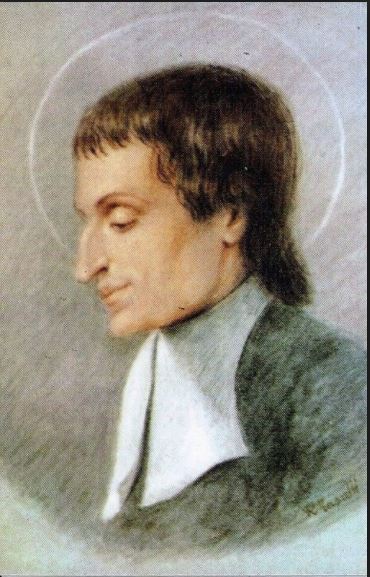
Today the universal Church celebrates the feast day of Louis-Marie de Monfort, a 17th century saint who is revered for his intense devotion to the Blessed Virgin Mary.
St Louis Marie is perhaps most famously known for his prayer of entrustment to Our Lady, “Totus Tuus ego sum,” which means, “I am all yours.” The St Pope John Paul II took the phrase “Totus Tuus” as his episcopal motto.
Born in Montfort, Brittany, on 31 January 1673, St Louis Marie possessed a strong devotion to the Blessed Sacrament as a child and was also intimately devoted to the Blessed Virgin, especially through the Rosary. He took the name Marie at his confirmation.
He was ordained a priest in June 1700 and assigned to Nantes. His great desire was to go to the foreign missions, preferably to the new French colony of Canada but his spiritual director advised against it. His letters of this period show that he felt frustrated from the lack of opportunity to preach as he felt he was called to do.
In November 1700 he joined the Third Order of the Dominicans and asked permission not only to preach the rosary but also to form rosary confraternities. He began to consider the formation of a small company of priests to preach missions and retreats under the standard and protection of the Blessed Virgin. This eventually led to the formation of the Company of Mary. At around this time, he first met Blessed Marie Louise Trichet (1684-1759) when he was appointed the chaplain of the hospital of Poitiers. That meeting became the beginning of Blessed Marie Louise’s thirty-four years of service to the poor.
He set off to make a pilgrimage to Rome, to ask Pope Clement XI, what he should do. The Pope recognised his real vocation and, telling him that there was plenty of scope for its exercise in France, sent him back with the title of Apostolic Missionary. On his return from his long pilgrimage to Rome, Montfort made a retreat at Mont Saint Michel “to pray to this archangel to obtain from him the grace to win souls for God, to confirm those already in God’s grace, and to fight Satan and sin”. These occasions gave him time to think, contemplate and write.
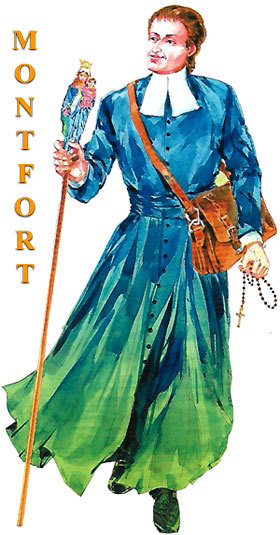
For several years he preached in missions from Brittany to Nantes. As his reputation as a missioner grew, he became known as “the good Father from Montfort”.
He left Nantes and the next several years were extraordinarily busy for him. He was constantly occupied in preaching missions, always walking between one and another. Yet he found time also to write – his True Devotion to Mary, The Secret of Mary and the Secret of the Rosary, rules for the Company of Mary and the Daughters of Wisdom and many Hymns. His missions made a great impact, especially in the Vendée. The heated style of his preaching was regarded by some people as somewhat strange and he was poisoned once. Although it did not prove fatal, it caused his health to deteriorate. Yet he continued, undeterred. He went on preaching and established free schools for the poor boys and girls.
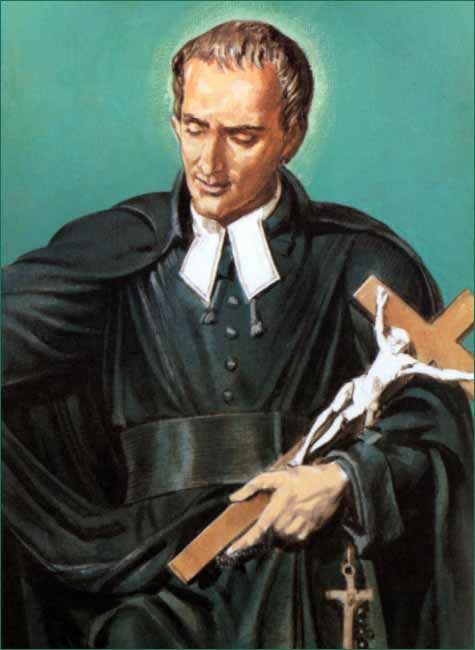
Daughters of Wisdom
The bishop of La Rochelle had been impressed with Montfort for some time and invited him to open a school there. Montfort enlisted the help of his follower Marie Louise Trichet who was then running the General Hospital in Poitiers. In 1715 Marie Louise and Catherine Brunet left Poitiers for La Rochelle to open the school there and in a short time it had 400 students. On 22 August 1715, Trichet and Brunet, along with Marie Valleau and Marie Régnier from La Rochelle received the approbation of Bishop de Champflour of La Rochelle to make their religious profession under the direction of Montfort. At the ceremony Montfort told them: “Call yourselves the Daughters of Wisdom for the teaching of children and the care of the poor.” The Daughters of Wisdom grew into an international Order and the placing of Montfort’s founders statue in Saint Peter’s Basilica was based on that Order.


Death and burial
Worn out by hard work and sickness, he finally came in April 1716 to Saint-Laurent-sur-Sèvre to begin the mission which was to be his last. During it, he fell ill and died on 28 April of that year. He was 43 years old and had been a priest for only 16 years. His last sermon was on the tenderness of Jesus and the Incarnate Wisdom of the Father. Thousands gathered for his burial in the parish church and very quickly there were stories of miracles performed at his tomb. Exactly 43 years later, on 28 April 1759, Marie Louise Trichet also died in Saint-Laurent-sur-Sèvre and was buried next to Montfort. On 19 September 1996, St Pope John Paul II (who beatified Trichet) came to the same site to meditate and pray at their adjacent tombs.

Spirituality
“God Alone”: was the motto of Saint Louis and is repeated over 150 times in his writings.
The Incarnation: “The Incarnation of the Word is for him the absolute central reality.”
Love of the Blessed Virgin Mary
Fidelity to the Cross
Missionary Zeal

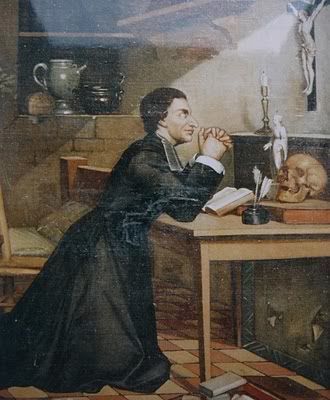
Total Consecration to Mary
In Montfort’s approach to Marian consecration, Jesus and Mary are inseparable. He views “consecration to Jesus in Mary” as a special path to being conformed to, united and consecrated to Christ, given that:
” …of all creatures the one most conformed to Jesus Christ, it follows that among all devotions that which most consecrates and conforms a soul to our Lord is devotion to Mary, His Holy Mother and that the more a soul is consecrated to her, the more will it be consecrated to Jesus Christ.”
“God the Father made an assemblage of all the waters and He named it the sea. He has made an assemblage of all His graces and He has called it Mary.”
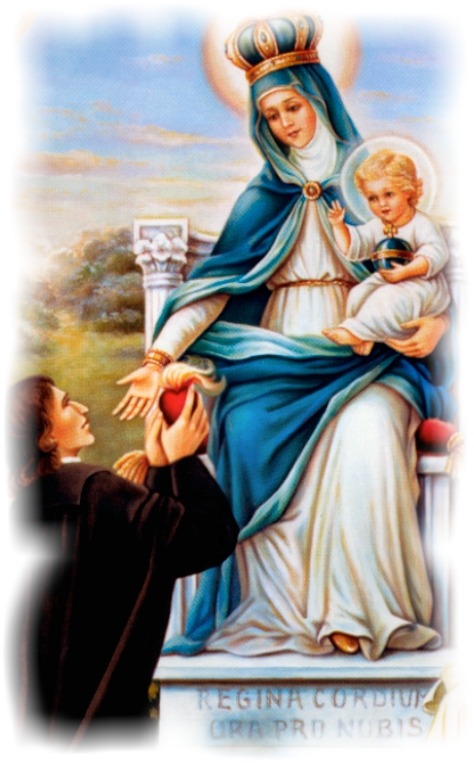
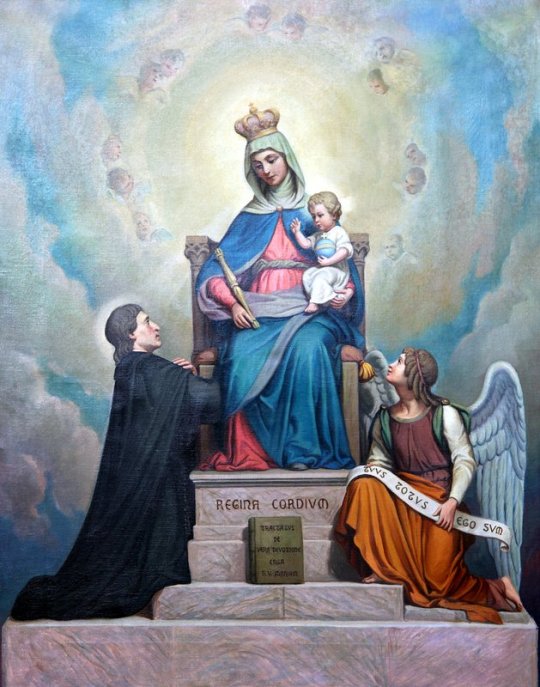
Louis de Montfort influenced a number of popes
In the 19th century, Pope Pius IX considered it the best and most acceptable form of Marian devotion, while Pope Leo XIII granted indulgences for practicing Montfort’s method of Marian consecration. Leo beatified Montfort in 1888, selecting for Montfort’s beatification the day of his own Golden Jubilee as a priest.
In the 20th century St Pope Pius X acknowledged the influence of Montfort’s writings in the composition of his encyclical Ad diem illum.
Pope Pius XI stated that he had practised Montfort’s devotional methods since his early youth. Pope Pius XII declared Montfort a saint and stated that Montfort is the guide “who leads you to Mary and from Mary to Jesus.”
St Pope John Paul II once recalled how as a young seminarian he “read and reread many times and with great spiritual profit” a work of de Montfort and that: “Then I understood that I could not exclude the Lord’s Mother from my life without neglecting the will of God-Trinity.” According to his Apostolic Letter Rosarium Virginis Mariae, the pontiff’s personal motto was “Totus Tuus.” The thoughts, writings, and example of St Louis de Montfort were also singled out by St Pope John Paul II’s encyclical Redemptoris Materas a distinctive witness of Marian spirituality in the Roman Catholic tradition
While the saint is best known for his spiritual writings, he was also a poet and during his missions managed to compose more than 20,000 verses of hymns. Montfort’s hymns and canticles were, for the most part, meant to be sung in village churches and in the homes of the poor. Some authors argue that a reading of Saint Louis’s hymns is essential for an understanding of him as a man and for appreciating his approach to spirituality. He is also said to have carved at least three statues depicting the Madonna and Child.
St Louis Marie Grignion de Montfort, Pray for us!
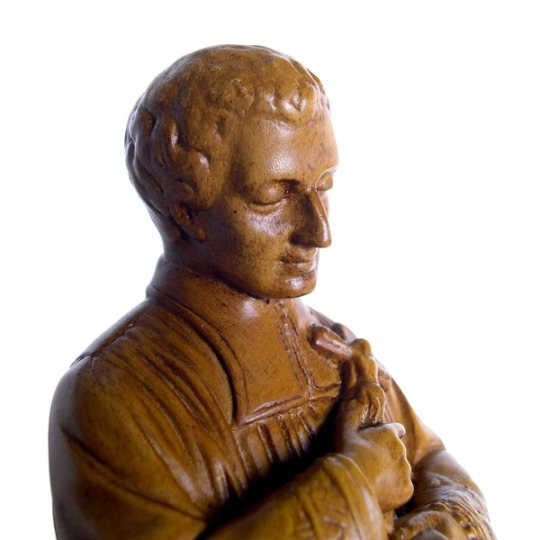

(via Memorials of the Saints - 28 April)
8 notes
·
View notes
Text
HEAD OF HOUSE OF BOURBON, SPEAKS OUT
Address to the French People on the Feast of St. Louis IX, King of France
0 notes
Text
An Absurd And Morally Irresponsible Look Into 2020's Possible Best Picture Nominees
(adsbygoogle = window.adsbygoogle || []).push({});
We’re just recently removed from the 91st annual Academy Awards, but it’s never too early to start predicting who may come away with Hollywood’s biggest prize at the 92nd Academy Awards. Ready or not, here is our way too early list of possible Best Picture Nominees.
I Transformed My Body Into A Pot Beef Stew For This Role
Christian Bale is a lock for another best actor nod as he’s undergone his most ambitious body transformation to date by morphing himself into a delicious, simmering pot of beef stew. With dynamite performances by Paul Giamatti as the man who makes the stew and Amy Adams as the woman who eats it, this erotic thriller is fun for the whole family and may score Netflix it’s first best picture win.
Homosexuality, But Not Too Much Homosexuality
After all the praise Bohemian Rhapsody received this year for its relatively tame portrayal of Freddie Mercury’s life and the backlash Brokeback Mountain received 15 years ago for portraying an honest, visceral passion between two men, Ang Lee has learned just how much gayness the Academy is willing to reward. This take on the 1954 novel by Frank Yerby set in The Antebellum South may not win the big prize but it is sure to pick up some technical awards and don’t sleep on Amy Adams! She may come away with a best-supporting actress win in this one. Finally!
Adversity: The Movie!
Amy Adams stars in the biopic of Marjorie Louise Tillman. A plucky woman who gets a job teaching in a rural town in 1930’s Missouri and cures its people of racism by teaching them that poetry isn’t something you read in a book, but something that takes you to new heights.
Esoteric Film From The Mind Of Charlie Kaufman
We’ve got no fucking clue what’s happening in this one, but we’re guessing that our pal Chuck is wrestling with even more demons in his personal life than we originally thought. This is less of a movie and more of an examination into the psyche of a lost soul spiraling downwards into an incredibly dark place to which there is no escape. Seriously, if you know this man talk to him. Ask him how he is and if there’s anything we can do to help. Ask him about the scene with Amy Adams and that poor duckling, please! We’re concerned for them both.
White People Doing White Things
Wes Anderson does it again! This film loosely based on a play by Czechoslovakian playwright Jaroslav Kvapil features an incredibly talented ensemble of white people who are doing so many things we can barely count them all! Amy Adams is stunning as Pauline Archembeau while Owen and Luke Wilson play her brothers Luke (played by Owen) and Owen (played by Luke).
The Dialogues Of Murder Murdery Murder People!
The 9th film by writer/director Quentin Tarantino is wild wide with a great soundtrack and even better dialogue. It follows contract killers Kit (played by Amy Adams) and Dirk (played by Haley Joel Osment) as they try to murder everyone they see all the time for some reason. But, the twist is that they do it with dialogue, dialogue, and even more dialogue. They talk all the time about everything constantly! From the little tiny plastic things on the ends of their shoelaces to who is better; Sheena Easton or Debbie Gibson? This bloody nightmare should secure Tarantino a 3rdScreenplay Oscar for his dialogue.
Star Wars: Episode IX
The latest installment of this Hollywood staple finally puts the fucking Skywalker shit to bed. Rey does some stuff… Kylo does some shit… Chewie is still there flying that plane in space with the robots… Billy Dee Williams comes back and has an incredibly jarring, but tasteful sex scene with some green blob voiced by Amy Adams. Consider this nomination as more of a legacy pick to send this saga off into the sunset.
The Actor In This Movie Is Old And May Die Soon So Let’s Reward Him With A Nomination For A Lifetime Of Really Solid Work
Ed Asner made waves at Sundance with his performance of a widower who loses his wife and lays in bed all day to await the sweet embrace of death to release him from his pain. Amy Adams and Emma Watson play his grandchildren who move in to take care of him and to remind him that life is still worth living. Who would have thought that watching Ed Asner lay in bed for two and a half hours would be this entertaining? The Academy usually doesn’t reward comedic performances, but this is one of those transcendent moments in film that really reminds us why we go to the movies.
An Absurd And Morally Irresponsible Look Into 2020’s Possible Best Picture Nominees was originally published on Weekly Humorist
0 notes
Photo

#OnThisDay Year 1865, Birth of King George V. King of the United Kingdom and the British Dominions, and Emperor of India, from 6 May 1910 until his death in 1936. King George V was born on 3 June 1865, in Marlborough House, London. He was the second son of Albert Edward, Prince of Wales, and Alexandra, Princess of Wales. His father was the eldest son of Queen Victoria and Prince Albert, and his mother was the eldest daughter of King Christian IX and Queen Louise of Denmark. He was baptised at Windsor Castle on 7 July 1865 by the Archbishop of Canterbury, Charles Longley. In November 1891, George's elder brother, Albert Victor, became engaged to his second cousin once removed Princess Victoria Mary of Teck, known as "May" within the family. Her parents were Francis, Duke of Teck (a member of a morganatic, cadet branch of the House of Württemberg), and Princess Mary Adelaide of Cambridge, a male-line granddaughter of King George III and a first cousin of Queen Victoria. On 14 January 1892, six weeks after the formal engagement, Albert Victor died of pneumonia, leaving George second in line to the throne, and likely to succeed after his father. George had only just recovered from a serious illness himself, after being confined to bed for six weeks with typhoid fever, the disease that was thought to have killed his grandfather Prince Albert. Queen Victoria still regarded Princess May as a suitable match for her grandson, and George and May grew close during their shared period of mourning. A year after Albert Victor's death, George proposed to May and was accepted. They married on 6 July 1893 at the Chapel Royal in St James's Palace, London. Throughout their lives, they remained devoted to each other. George was, on his own admission, unable to express his feelings easily in speech, but they often exchanged loving letters and notes of endearment. #RoyalBirth #HistoryofRoyals #RoyalHistory #KingGeorgeV #Monarchy #EuropeanRoyalties https://www.instagram.com/p/CPqT6lBHQgv/?utm_medium=tumblr
0 notes
Photo

Our Lady of Lourdes - Short Novena - Recited February 2nd - 10th - Feast Day - February 11th
O Brilliant star of purity, Mary Immaculate, Our Lady of Lourdes, be our comfort, hope, strength, and consolation. Amen
________
Our Lady of Lourdes
by Rev. Matthew R. Mauriello
The story of Lourdes is well known. Between February 11 and July 16, 1858, the Blessed Virgin Mary appeared eighteen times to fourteen-year-old Bernadette Soubirous in that small town located in the foothills of the Pyrenee mountains of southern France.
Bernadette was born on January 7, 1844, the eldest of six children of Francis Soubirous and Louise Casterot. She was a delicate girl who suffered from asthma and cholera. She could neither read nor write and spoke only the Burgundian dialect of her area. Her family was sinking into poverty, and the day the first apparition took place she went to gather firewood along the bank of the River Gave to help her mother.
Her attention was drawn to the noise of rustling bushes near the Grotto of Massabielle, from the French vieille masse meaning ancient mass. Then Bernadette saw a beautiful young girl of sixteen or seventeen. She described this girl as "dressed in a white robe, girded at the waist with a blue ribbon. She wore upon her head a white veil which gave just a glimpse of hair. Her feet were bare but covered by the last folds of her robe and a yellow rose was upon each of them. She held on her right arm a rosary of white beads with a chain of gold shining like the two roses on her feet."
Bernadette knelt and began to pray the rosary. At the end of the five decades the woman smiled and disappeared. The young visionary returned and on February 18 Our Lady began her message telling young Bernadette, “I do not promise to make you happy in this life but in the next.” On February 24, Mary asked for penance and prayer for the conversion of sinners and the following day, she instructed Bernadette to dig the ground near the grotto. From that a spring came forth which to this day is used for the bath by pilgrims to Lourdes.
At the apparition of March 2, Bernadette was instructed by Our Lady to "tell the priests that people should come here in procession and that a chapel should be built on the site." On the Feast of the Annunciation, March 25, the Blessed Virgin told Bernadette in the dialect of Lourdes, "I am the Immaculate Conception." This dogma had been defined by Pope Pius IX just a few years earlier on December 8, 1854.
The Basilica at Lourdes was consecrated in 1876 and the faithful, countless in number, flock in pious pilgrimage to the holy grotto. It is there that their faith and devotion are aroused and they re-commit themselves to conform their lives to the Christian message. There, as well, miraculous favors are granted and healings, both physical and spiritual, have taken place. Great emphasis is placed on devotion to the Eucharist and just as at the wedding feast of Cana, Mary points to her Son.
The liturgical feast of Our Lady of Lourdes was established for February 11, approved by Pope Leo XIII, and first granted to the Diocese of Tarbes in the year 1890. Less than twenty years later, on November 13, 1907, his successor, Pope St. Pius X proclaimed that it be observed throughout the universal Church.
The visionary Bernadette entered the Sisters of Notre Dame at Nevers in 1866 and was given the name of Sister Mary Bernarda. She worked there as sacristan and avoided publicity as best she could. She referred to herself as "a broom which Our Lady used, but now I have been put back in my corner." She died on April 16, 1879, at the young age of thirty-five, was beatified in 1925 by Pope Pius XI and canonized by him on the Feast of the Immaculate Conception, December 8, 1933. She appears in the church records as St. Mary Bernarda, but in the hearts of the faithful she is affectionately remembered as St. Bernadette.
________
Prayer to Our Lady of Lourdes
Be blessed, O most pure Virgin, for having vouchsafed to manifest your shining with life, sweetness and beauty, in the Grotto of Lourdes, saying to the child, St. Bernadette: "I am the Immaculate Conception."
A thousand times we congratulate you upon your Immaculate Conception.
And now, O ever Immaculate Virgin, Mother of mercy, Health of the sick, Refuge of sinners, Comforter of the afflicted, you know our wants, our troubles, our sufferings deign to cast upon us a look of mercy. Amen
________
Short Novena to Our Lady of Lourdes
(To be recited from February 2-10)
Feast Day February 11
O ever Immaculate Virgin,
Mother of Mercy,
Health of the Sick,
Refuge of Sinners,
Comfort to the Afflicted,
You know my wants, my troubles, my sufferings.
Deign to cast upon me a look of mercy.
By appearing in the Grotto of Lourdes,
You were pleased to make it a privileged sanctuary,
Whence you dispense your favors;
And already many sufferers
Have obtained the cure on their infirmities,
Both spiritual and corporal.
I come, therefore, with the most unbounded confidence
To implore your maternal intercession.
Obtain, O loving Mother,
The granting of my requests (state requests).
Through gratitude for favors,
I will endeavor to imitate your virtues
That I may one day share your glory.
Our Lady of Lourdes, pray for us. Amen.
Conclude with one of each:
(Our Father - [Our Father, who art in heaven, hallowed be thy name; thy kingdom come; thy will be done on earth as it is in heaven. Give us this day our daily bread; and forgive us our trespasses as we forgive those who trespass against us; and lead us not into temptation, but deliver us from evil. Amen.],
Hail Mary - [Hail Mary, Full of Grace, The Lord is with thee. Blessed art thou among women, and blessed is the fruit of thy womb, Jesus. Holy Mary, Mother of God, pray for us sinners now, and at the hour of our death. Amen.],
Glory Be - [Glory be to the Father, and to the Son, and to the Holy Spirit. As it was in the beginning, is now, and ever shall be, world without end. Amen.]).
________
Click below for:
Short Novena Pamphlet To Our Lady Of Lourdes
https://docs.wixstatic.com/ugd/a84285_d4ce7e69acec4959be72ecf56987de5b.pdf
All Novena Pamphlets
https://www.pamphletstoinspire.com/novenas
0 notes
Text
One of those serendipitous moments happened recently as I wiped down a new old sofa and otherwise puttered in the apartment that overlooks the courtyard.
In order to not lose my mind–actually to lose myself inside my mind–while doing uninteresting or unpleasant tasks, I listen to podcasts. No amount of mindfulness is going to make me all zen about mopping the floor or sorting laundry or running (or sewing!). I want to get the job done with minimal pain, and the best analgesic is one that makes me think about something else, the more esoteric, the better. Sometimes I do not want to focus on what I am doing. At all.
The first to entertain me was Lauren Bastide, with the most wonderful, we’re-there-in-the-room conversation with Amandine Gay (“La Poudre“). I was riveted by pieces about the new movie “Tower” and the decline of Lancaster, Pennsylvania (both on “Fresh Air,” which has the greatest interviewer ever, Terry Gross). I discovered Lady Lamb (thanks to “On Point”). People talked about medical mysteries (TED Radio Hour). But then I had no more podcasts left in my feed.
So I switched to the NPR One app, which is like a slot machine for podcasts, except that you never lose. They themselves call it Pandora for public radio–more PG-rated than a slot machine. First I got the founders of Kate Spade talking about how they got started (on “How I Built This“)–a logical progression because both Ted Radio Hour and How I Built This are hosted by Guy Raz, who has the most unbelievable name ever. Then the app decided I needed to hear a show I was unfamiliar with, called “Stuff You Missed in History Class.” WTF? HOW DID THEY KNOW????
I was mostly an A+ student, but I have no idea how I pulled it off in history (my only non-A’s were in gym class–C. “She never makes trouble” was the only nice thing the gym teacher found to say about me, year after year. Yes, I saw my old report cards not long ago). Those dates…they just wouldn’t adhere to my brain cells, even though I am a math lover and have no trouble memorizing zip codes and country dialing codes. However, it didn’t work with history. And it’s too bad, because I have come to love history, though I still don’t remember the dates. I treat dates in history the way I treat recipes–approximations are good enough. Freudian analysis would probably figure it out, but that would take too much time and effort. And anyway, all I really care about are the stories.
The history podcast was about another momentous women’s march–on Versailles! And there I was, on my knees, rubbing an ammonia solution into a Louis XVI sofa to strip it of all traces of its very charming former owner. Louis XVI! The one getting marched on in that very podcast!
An aside here to discuss the fine lady who was getting rid of her sofa. She was suffering from back pain and was going for an operation any day now, though that didn’t stop her from grabbing the coffee table and rolling up the carpet in front of the sofa–the Carnivore and I were going nuts trying to stop her but she was as quick as butter on a hot skillet. She stood about to my shoulder, which, considering I’m short, is nothing. I bet she didn’t weigh 40 kilos. A wisp of a woman.
As the Carnivore manipulated our neighbor’s camionette (a kind of enclosed pickup that’s very common in France) into her driveway, I chatted with Madame about life. The conversation quickly turned to death. She explained that she was keeping one of the armchairs that matched the sofa because it had been her mother’s, who had lived with her before dying. She then segued to her husband, who died suddenly, in his sleep, not long ago (which might have been a few years, I wasn’t sure). Trying to comfort her, I told her that my parents had died recently, relatively quickly, and in light of what I’d seen, I think the quicker the better. I am not alone in this. When I was leaving my post as a teacher in Africa, my students collected messages for me, and one sweet student wished me “a happy family, a happy life and a quick death!”
Madame grasped my arm and said, “Chut!” (Shush!) But then she went on anyway, and we talked about how a slow death does prepare the survivors for the idea that the loved one would be no longer, while a quick death is probably nicer for the person dying but a shock for the family.
This lady was selling some things in her finely furnished (“j’étais décoratrice!”) little house in order to move in with or near to her daughter, who had married an Italian and had followed him to Milan (she contorted her small, thin face at this, as if she had bitten into a spoiled fruit). First an operation on her back in France, then a new life in Italy. I felt sorry for her, abandoning all the stuff that reminded her of happier times–for some people, stuff is an end unto itself, a way to achieve some kind of status, but for others it is a totem of people or memories of happy times, and, though I knew her but for less than an hour, I think that, even if years ago she was in the former category, she now was in the latter). Plus, the weather in Milan is pretty crappy, compared with Aude.
Back to the furniture. The sofa is, obviously, a reproduction of Louis XVI. He’s better known as the husband of Marie Antoinette. I say “obviously” because it’s a sofa-bed, a technology that came somewhat later than the late 1700s. Madame said she bought it in Revel, which is a hub for marquetry and fine furniture making. Considering how heavy it is, I believe her.
Louis XVI came after 15 other Louis (Louises?), the first of whom appeared in 814 A.D. The first Louis had a tough act to follow: Charlemagne. There were LOTS of other kings before the first Louis (who was known as both “the pious” AND “the debonaire”!!!!! How did he manage that?), but they had names like Chilperic and Childeric and Chlothar and Dagobert. (You should know that in some places–like Belgium–a dagobert is not unlike a Dagwood sandwich, giving the mitraillet a run for the money.)
The later Louis (Louises?) became known for their interior décors. We won’t spend time on the earliest ones. Louis II, aka “the stutterer”!! Too bad he didn’t see “The King’s Speech.” There also were Louis the Fat (they really weren’t politically correct in those times) and Louis the Young and Louis the Lion and St. Louis (the IX–9th–who built the “new” town of Carcassonne around 1260). Then Louis X, aka the Quarreler; Louis XI, aka “the prudent, the cunning, the universal spider.” Sorry, but that one is The Best!!! Being Prudent, Cunning AND a Universal Spider? OMG. What a MAN! Or was he a superhero? But that was from 1461-1483. They don’t make them like they used to. Or maybe they do, except for the prudent part, and we are like flies stuck in a trap.
Louis XII was the “father of the people,” followed by a number of other-named monarchs, including Henri II, whose style was much-copied later.
Louis XIII (13th), aka “the Just,” was in the first half of the 1600s. We know that our apartments existed in 1624, though they might have been there earlier. (I will try to get to the bottom of this one day.) His style is known for lots of twists (torsades) and straight lines, which seems like a contradiction, eh?
Louis XIV was known as Louis the Great or the Sun King. Hard to beat that (though his great-grandson, Louis XV–“the Beloved”–seems to have). Fourteen ruled from 1643-1715 and built Versailles. Think glam.
And then we get to Louis XVI (we’re up to 16 here–seize in French, pronounced “says”), the “restorer of French liberty,” who ruled from 1774 to 1792. Note those dates! What happened just two years after 1774? Hmmm! An era of foment all over the place.
Marquetry
Having read “A Tale of Two Cities” (“It was the best of times, it was the worst of times.” Sidney Carton: “It’s a far, far better thing that I do than I have ever done; it is a far, far better rest that I go to than I have ever known.” Did you, too, have to memorize that in high school?) and Victor Hugo’s “Les Miserables” (“It is nothing to die. It is frightful not to live.”), I had an impression of the French Revolution as having been a bloody affair directed by perhaps well-meaning but vicious people like Madame Lafarge, Javert, Rousseau and Robespierre and that the revolution was at full swing from the moment the people stormed the Bastille on July 14, 1789, until the day Louis XVI and Marie-Antoinette lost their heads on the guillotine in 1792. But in fact, the revolution started earlier and the king hung on for several years. Talks happened, spiced up by marches, including by nasty women.
Among the problems at the time, as “What You Missed in History Class” explains for us, were bad harvests, government deficits, over-taxation and illiquidity. It boiled down to the masses starving.
You must listen to the podcast to get all the details, but basically, people were fed up with not being fed. Call it a minimum wage issue. The podcasters express doubts that Louis XVI was actually evil incarnate or even just callous but instead suspect that he was way over his head and incompetent. In any case, a revolution was born.
Despite all that bad blood, Louis XVI’s style remains much-coveted today. OK, coveted among people who think that IKEA is great if you are 20 years old and on a small budget but then you should buy furniture that will last more than three years, and that proves it by having lasted already more than 100. Coveted by people who do not want to sit on backless benches at dinner. Who do not think that plastic chairs, even Eames, are chic or comfortable.
But how to keep your Louis, Louis, Louis, Louis straight? (And Louis is pronounced like Louie, not Lewis.) First of all, FirstDibs has a great explainer of the different Louis (Louises?). If you are just starting out, start here. Another great resource is the Metropolitan Museum of Art with essays on French chairs and 18th century French furniture more generally.
As the Louvre explains (and they should know), you have Louis XIV and the Regency from 1660-1725, then Rococo from 1725-1755, then classicism and the reign of Louis XVI from 1755-1790.
When I lived in Brussels and Paris was much closer than from where I am now in the deepest corner of rural France (which actually used to be Spain), I always partook of Les Journées de Patrimoine, in which many buildings of historical significance are opened to the public. Sometimes they are museums that drop their usual ticket charges, but the best are government or private buildings that otherwise are strictly off-limits. Once, I toured the Banc de France–like the Federal Reserve, especially because I visited before the euro–and was in a group of very well-dressed, impeccably coiffed, middle-aged Parisians. The kind of people known as bourgeois, or if younger as BCBG—bon chic, bon genre. I saw a couple, in nearly matching tweed suits (her in a skirt, him in trousers whose crease up until that moment had been razor-sharp), on their hands and knees looking at the underbelly of an antique gilded demi-lune console. It’s true there were amazing antiques in every direction, with computers and papers plonked on top.
Fit for a throne
The Carnivore is very sensitive about Louis (Louises?), and is partial to No. 16. He searched high and low for a toilet-paper holder that was in the style of Louis XVI. Even though according to this, toilet paper didn’t get cheap enough for the masses until much later. Far more impressive is the history given by ToiletPaperWorld, which mingles Stephen Crane, money and defecation. “French royalty used lace.” No wonder there was a revolution! (The delicacy of the terms the sites uses is an impressive exercise in euphemisms.)
I have seen references around the Internet to “Louis chairs,” to which I think, WHICH Louis? This alone should qualify me for French citizenship. But which Louis matters only if you’re paying top euro for what’s supposed to be the real thing, in which case, you had better know better. For everything else, “Louis” means something sorta French-antique-looking, probably Louis XVI.
All the same, I have seen how the French teach their young to know their Louis (Louises?). From the time our kid was in the equivalent of second grade, the whole memorize-your-kings thing started. Which is probably why, on a different tour during les Journées de Patrimoine, the docent told us the story of a beautifully painted stucco ceiling in the Marais of Paris, and several of the tour-goers objected vociferously to the dates and kings cited. I was dumbstruck to be in the middle of a heated argument about something that had happened 400 years earlier. At the same time, I was full of admiration, because I absolutely cannot remember such dates.
As for serendipity, what is one of the most beautiful and joyful words in the English language (in French, it’s “happy luck,” not nearly as fun a word as serendipity), algorithms and artificial intelligence are snatching it away from us. Serendipity is opening a newspaper and happening to spy something interesting and relevant. Serendipity is walking into a shop and finding just what you need on sale. Serendipity is running into a friend you haven’t seen in ages someplace unexpected (I once bumped into an old dance buddy from NY in the line for the opera in Rome). Now our news is filtered based on what we like, we shop online for things that are pushed to us, and we know where everybody we’ve ever met is at any moment.
Some of my greatest “aha” moments have been when I have read or listened to things that on the surface didn’t interest me in the least. But they were in publications or on programs that I knew did good work, so I gave them my time. And I was rarely disappointed. I never would have sought out “Stuff You Missed in History Class.” But it came to me, with a story that touched exactly on what I was doing.
Serendipity rules.
Louis, Louis, Louis, Louis One of those serendipitous moments happened recently as I wiped down a new old sofa and otherwise puttered in the apartment that overlooks the courtyard.
0 notes
Text
Hyperallergic: When Experimental Music Resonated with Abstract Art
‘Nothing and Everything: Seven Artists, 1947–1962,’ installation view (image courtesy of Hauser & Wirth; photo by Genevieve Hanson)
Next to the signature on Philip Guston’s “Untitled” (1952) is the dedication “for Morty.” This hangs in the central gallery of Hauser and Wirth’s 69th St. show Nothing and Everything: Seven Artists, 1947 – 1962, curated by Doug Dreishpoon. In the back room, recordings of compositions by Morton Feldman and John Cage play on loop, including Morty’s “For Franz Kline” (1962). Upstairs is a selection of paintings and works on paper by Kline. This ricochet of dedications is one of the more explicit modes of social and aesthetic networking that bind together the composers and artists in this rich exhibition.
The title of the show accentuates what composer Christian Wolff — the last living member of the New York School of composers and briefly a student of Cage’s — characterized as the “interesting differences, held in a kind of cheerful suspension” that can be heard in “Radio Happening I” (1966), a conversation between Cage and Feldman. Excerpts of that revealing exchange alternate with a recording of Cage’s “Lecture on Nothing,” quietly looping at the entrance of the gallery. The exhibition spans three floors and includes original and facsimile scores by Cage and Feldman, paintings by Guston, sculpture and works on paper by Louise Bourgeois and David Smith, and oil paintings by Joan Mitchell.
Philip Guston, “Untitled” (c. 1951), gouache on paper, 44.5 x 57.8 / 17 1/2 x22 3/4 in (image courtesy the Estate of Philip Guston and Hauser & Wirth; photo by Genevieve Hanson)
The tension between the worldviews of Cage and Feldman immortalized in “Radio Happenings” is representative of the show’s variety. These artists and composers gathered together at The Club and the Cedar Tavern, talked, and supported one another, but they had divergent aesthetic outlooks that were allowed to stand because of the friendship. Recently, while visiting Brigid Cohen’s “Musical Experimentalism: Poetics and Politics” seminar at NYU, Wolff said he wasn’t sure the artists liked their concerts very much, but they were supportive and would show up. The slender monoliths of Bourgeois’s “Breasted Woman” (1949–50; cast 1989) and David Smith’s “Forging IX” (1955) represent contrasting approaches to the gendered social positions of the artists: Culturally embedded into Smith’s title, masculinity enlists a deceptive neutrality; Bourgeois hangs the feminine body on the work.
Louise Bourgeois, “Breasted Woman” (1949–1950; cast 1989), bronze, paint, and stainless steel, 137.2 x 8.9 x 8.9 cm / 54 x 3 ½ x 3 ½ in (© The Easton Foundation/Licensed by VAGA, New York NY; courtesy Hauser & Wirth; photo by Christopher Burke)
Looking at Bourgeois’s sculpture “The Blind Leading the Blind” (1947–49) strains my body into a perpetual tiptoe as I both carry off a body and am myself borne away. The wood tapering vertically to the floor plunges me into the vertigo of modernity of which Baudelaire wrote; the horizontal elements direct me to a vanishing point from which I came or to which I am being led. Like a sound, her works radiate their effect beyond visual boundaries.
Kline’s works of black paint on newspaper have a fascinating parallel with Cage’s ideas about listening. At 13:00 of “Radio Happening I,” Cage tries to convince Feldman that the transistor radios that so bothered Feldman were only “making audible something that you were already in.” For Cage, the radio actualizes a selection of the noise in which we are immersed. In the history of Kline’s work, a projector stands in for Cage’s radios: At de Koonings suggestion, Kline projected a drawing of a chair onto the wall at an enormous size, and he found “the strokes expanding as entities in themselves, unrelated to any entity but that of their own existence.” Kline’s black figures seem to be the actualization of some subset of the virtual noise of newsprint on which they stand. As in Feldman’s vanishing instrumental works, the materials become isolated amid space or silence, depending on your medium.
Though Kline’s works may zoom in on isolated existence, they look good together, taken in at a glance, just as Cage found it congenial to have his works played simultaneously. In contrast, Mitchell’s paintings are lonely, asking you to get lost in the frame as if nothing else existed in the universe: Enter with only your memory of life. We are meant to engage them with a question on our lips, as is the case with Feldman’s music from this period. Later in his career, Feldman’s works ask the questions for us, but at that point we don’t mind, thanks to the hard-won eloquence of the later pieces such as “Triadic Memories” (1981).
‘Nothing and Everything: Seven Artists, 1947–1962,’ installation view (image courtesy of Hauser & Wirth; photo by Genevieve Hanson)
The press release presents the show as a group of artists pushing “their respective mediums to new realms of abstraction.” But the notion of “abstract music” is a troubled one; music becomes “abstract” mostly by association with art that is so named. Feldman’s sparse instrumental works actually throw us back to the material — a single pluck of a cello string sounds, unmoored from its aesthetic symbolic order. Cage’s cacophonous “Williams Mix” (1952) hurls the material at us: horns, frogs, and voices ordered by many flips of the coin and assembled through a score that functions like a dressmaker’s pattern. (The original score on display is well worth examining.) In the works presented, it is primarily the absence of an intelligible grammar of melody that prevents the familiar and emphatically abstract structures of music from cohering; it renders the sounds starkly and concretely associated with their bodily sources. There is no attempt to enlist virtuosity to transcend the instrument, to make a piano sound either happy or sad according to a recognizable code.
The exhibition text’s comparison of silence and space is a more fruitful theoretical joining of the disciplines, but the leap from sound to space is not so easily made technically. I found the audio volume in the “specially designed listening room” frustratingly low and uneven. Sitting there on a rainy day, I could hear the sniffles of other visitors better than the music. I kept getting distracted by someone talking in another room and only later realized that it was Cage’s “Lecture on Nothing” chiming in over Feldman’s “Projection I.” I think Cage of the “Radio Happenings” era wouldn’t have minded any of that — he thinks he wrote it all anyway. (Listen to 5:00–5:30 for that side of Cage and 0:00–2:15 for the backstory.) He probably wouldn’t even have minded when another visitor sitting in the room with me answered her phone (“…you’re a wonderful daughter, see you at the restaurant…”) and then made a few more calls (arranging meeting Dorothy and Thomas at the restaurant). But it’s a shame that the fast-ride-in-a-loud-machine that is Cage’s “Williams Mix” recedes into the silence of the gallery.
‘Nothing and Everything: Seven Artists, 1947–1962,’ installation view (image courtesy of Hauser & Wirth; photo by Genevieve Hanson)
Feldman’s music is particularly poorly served by the aural intrusions, but even more to the point, in this snapshot of New York c. 1950, the artifacts presented are incomparable. We look at the actual paintings and sculptures. We listen only to recordings of the music. Feldman’s “Projections I” is for cello, not a recording of a cello. The difference is as significant as that between a sculpture and a photograph of a sculpture. Cage once quipped, “I’ve always been a proper member of the musicians’ union, in favor of live music.”
Happily, the programing that accompanies the show offers two very different types of live performances. Coming up on March 16, Janine Antoni, Petah Coyne, Rona Pondick, and Jeanne Silverthorne will read from Louise Bourgeois’s writings at Hauser & Wirth’s 22nd St. publications space. On March 1, Christian Wolff curated a performance of music by Cage, Feldman, and himself at the Jewish Museum that presented nine works dating from 1950 to 1956 and Wolff’s “Six Melodies Variation” (1993), which was written as part of a memorial after Cage’s death in 1992. Wolff, who met Cage and Feldman in 1950 when Wolff was only 16, heard a couple of these pieces for the first time. In fact, it was Wolff who gave Cage a copy of the I-Ching, which Cage used to compose “Music of Changes III” (1951). At the beginning of the program, Doug Dreishpoon asked the 100+ person audience how many people had seen the exhibition — about five of us raised our hands. From listening to the chatter around me, it seemed that this was a crowd of music lovers. Where were the art lovers? I wonder how many experimental music fans will go to see the sculpture and painting.
‘Nothing and Everything: Seven Artists, 1947–1962,’ installation view (image courtesy of Hauser & Wirth; photo by Genevieve Hanson)
Nothing and Everything: Seven Artists, 1947–1962 continues at Hauser and Wirth (32 East 69th Street, Upper East Side, Manhattan) through April 1.
The post When Experimental Music Resonated with Abstract Art appeared first on Hyperallergic.
from Hyperallergic http://ift.tt/2lHozFz
via IFTTT
0 notes